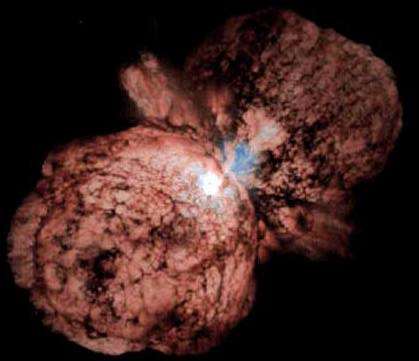
This is Eta Carinae. It is my favorite planetary nebulae. It is a key example of the Ball-of-Light Particle Model. Be sure to see the information dedicated to this spectacular planetary nebulae! There is additional information on how bipolar planetary nebulae form.
This is the Hourglass Nebula. It has a similar shape to Eta Carinae. The arrow in the above image points to the central star. An enlargement of the this area is shown below. This part of the nebulae has been referred to as, "the Eye of God."
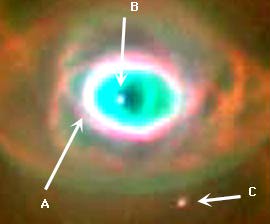
This is an image of the central core of the Hourglass Nebula -- sometimes referred to as the "Eye of God." There are many possible explanations for describing this structure. The Ball-of-Light Particle Model describes what is happening like this:
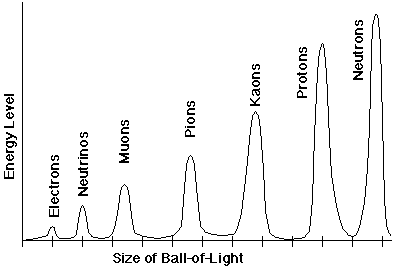
This is the Cat's Eye Nebula. This planetary nebulae was most likely caused by a large object such as a planet or comet rapidly spiraling into the central star. Note the different colors in the spiral structures. The balls-of-light that were ejected from the core of the star that eventually created these spirals are decaying more rapidly at this stage as the motion relative to the core slows. (See also, Zones of Instability in Galaxy Formation.) For more information on the Cat's Eye Nebulae, see Ansae.
These 3 Nebulae have particularly beautiful structure. The structure is the key. The Ball-of-Light Particle Model predicts that the cores of stars are balls-of-light. When they decay, the massive electromagnetic fields on the cores create the structure of planetary nebulae. Traditional astrophysical theory has very little control over "structure." There is very little there to "mold" these shapes. The Ball-of-Light Particle Model explicitly has total control over these shapes. They are simply variations of spherical harmonics. The shapes of planetary nebulae result primarily from the electric and magnetic fields on the core of the star -- partly from the gravitational field within the core of the star.
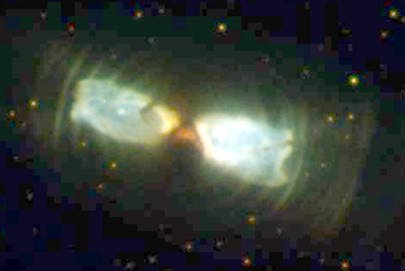
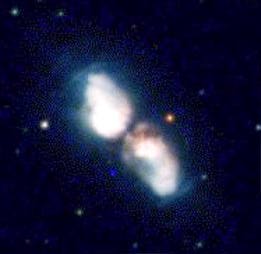
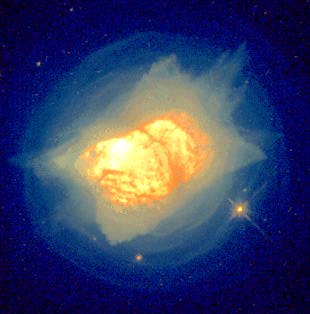
In this image of NGC 7027 note how the two lobes are forming.
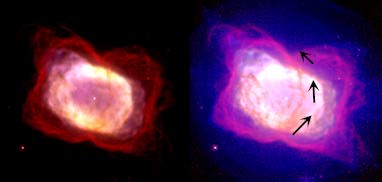
In these images of NGC 7027 a trail of dust is evident around the waist of the forming lobes. It is likely this is a dust trail left by an orbiting object such as a star. (See also, Where's the Dust?)
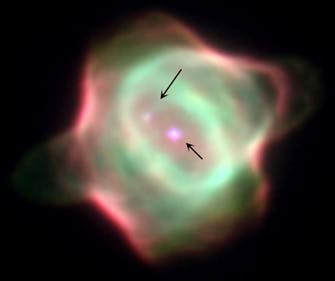
Note the central star. The upper arrow indicates a possible orbiting object that is inducing the waves in the central core. (It is possible that this object is an ejected ansae.)
Scientists have theorized that the expanding shell of a Planetary nebulae is formed as ejected material from the star impacts older material ejected by a strong stellar wind. If this was true, then X-rays should be found from the edge of the expanding shell. This is not the case.
Gail M. Conway, You-Hua Chu (University of Illinois) and Thomas H. Chang (University of Texas) have performed detailed analysis of X-rays from the nebulae of Planetary Nebulae. They discovered that X-rays were greatest near the central stars. They also detected numerous clumps and streaks of X-rays.
The Ball-of-Light Particle Model predicts these clumps of X-rays are produced by relatively large -- larger than elementary particles -- decaying balls-of-light.